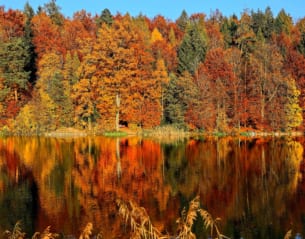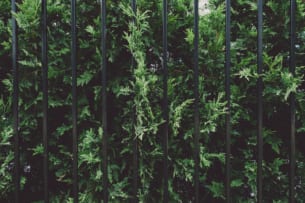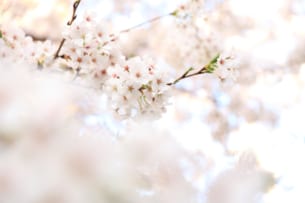Cherry Blossom and Full Bloom Forecast for 2025 (Part 5)
Cherry Blossoms bloom for Nagano, Hokuriku and Southern Tohoku in Early April, Best Viewing Time from Kyushu to Kanto
Press Release
Japan Weather Association (JWA) released its part 5 forecast for cherry blossoms and full bloom across 84 locations throughout Japan on Wednesday, April 2nd, 2025.
◆Key points for the 2025 cherry blossom forecast (5th edition)
【Current Situation】
– Many areas in Western and Eastern Japan have blossomed around the yearly average, but some areas are in full bloom earlier than average.
【Predictions】
– Areas in Western and Eastern Japan that have not yet reached full bloom are expected to mostly reach full bloom in early April.
– In Northern Japan, both blossoming and full bloom are expected to occur earlier than average, with many areas expected to bloom significantly earlier.
*The information includes both sample trees from Japan Meteorological Agency’s Local Meteorological Observatories (LMOs), and from independent observation locations of JWA.
The next cherry blossom forecast (6th) is scheduled for April 9th, 2025.
In case of any extraordinary developments or updates to the forecast between 3rd and 8th of April, an updated forecast will be published on JWA’s weather forecasting media 【tenki.jp】, on their cherry blossom forecasting page.
For the most recent updates and information on the 2025 cherry blossom please visit the 【tenki.jp】 The Cherry Blossom and Full Bloom Forecast page: https://tenki.jp/sakura/expectation/ (Japanese only)
Cherry Blossom Forecast Map
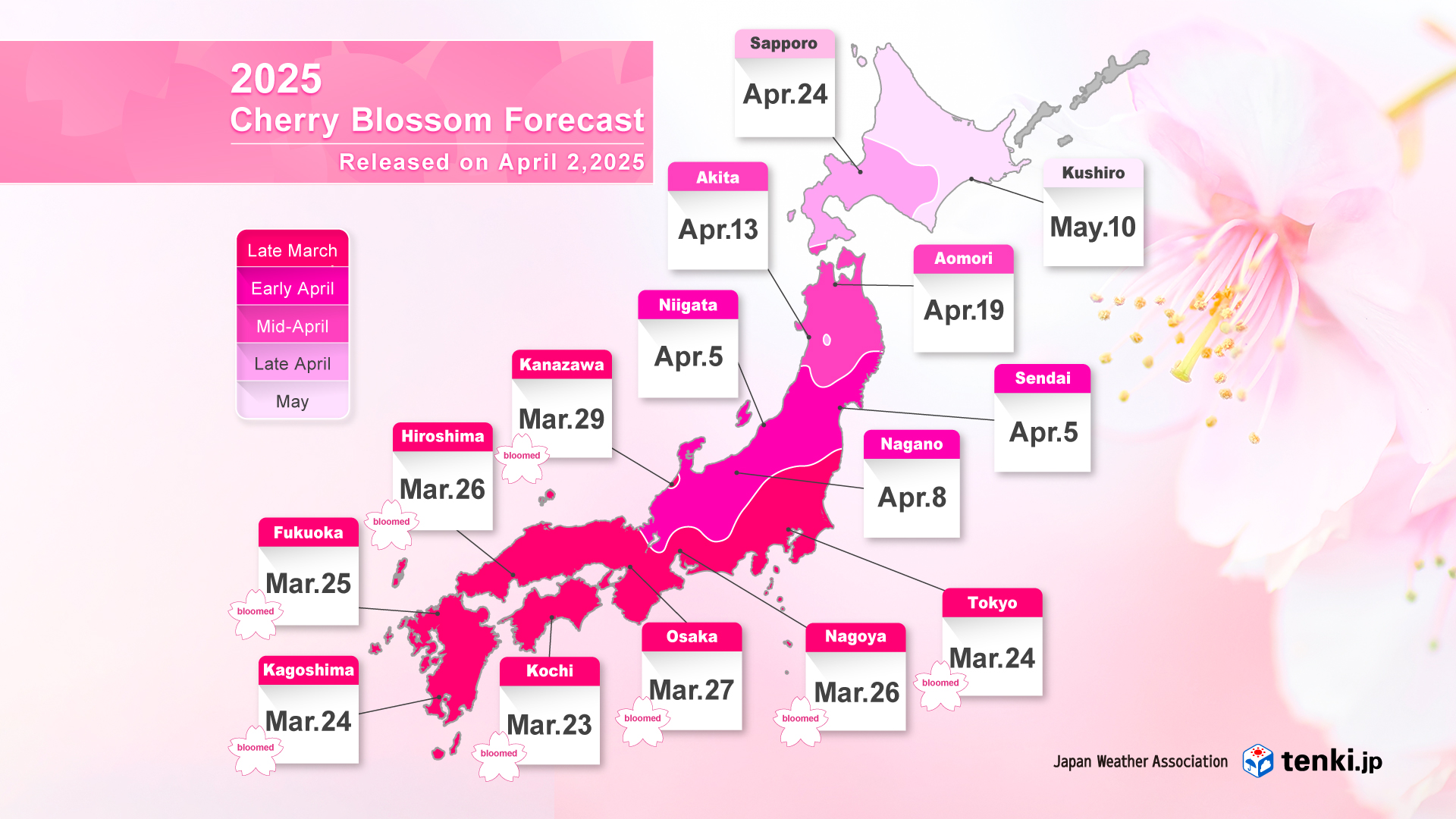
2025 Blossoming Trend
In 2025, cherry blossoms for many areas of both western and eastern Japan are blooming in line with the annual average.
In northern Japan, where cherry blossoms are just beginning to bloom in earnest, they are expected to appear earlier than average, and significantly earlier in some.
This year’s blooming began in Sukumo*1 on March 22nd and has widened to various areas since the 23rd. A total of 45 locations experienced blooming in March. This is roughly in line with the yearly average number of locations to bloom in March*2, and six more than the 39 locations last year, when blooming south of Kanto occurred later than usual.
Back to this year’s blossom, in Nagano, Niigata, Tohoku, and Hokkaido, where the cherry blossoms are on the verge of blossoming, many areas are expected to bloom earlier than the yearly average.
*1 The information for Sukumo (Kochi Prefecture) is not from sample trees of Japan Meteorological Agency’s Local Meteorological Observatories (LMOs), but from independent observation points of JWA.
*2 Based on the average bloom date for each location, the total number of locations that bloom during March is 44.
2025 Full Bloom Trend
In 2025, cherry blossoms are likely be in full bloom around or earlier than the average in western and eastern Japan, and earlier than average in northern Japan.
Some areas from Kyushu to Kanto, where the cherry blossoms bloomed early, have already reached Full Bloom. Last week in particular, we saw unseasonably hot weather with maximum temperatures exceeding 25°C in many areas from Kyushu to Kanto, and even surpassing 30°C in some, reaching summer-like conditions. So, while the cherry blossoms bloomed at about average or slightly later than average, some places reached full bloom a little earlier than average, reducing the number of days from the trees blooming to them being in Full Bloom.
Looking ahead, cherry blossoms are expected to be in full bloom across a wide area in southern Tohoku in early April. In northern Tohoku, the cherry blossoms are expected to be in full bloom from mid- to late April, and in Hokkaido, many places will be able to enjoy full bloom around the long holiday period.
Cherry Blossom Forecast Information
For more detailed information about JWA’s Cherry Blossom Forecast, please visit the link below.
https://www.jwa.or.jp/english/service/seasonal-news-cherry-blossom-forecast/
Cherry Blossom Season in Japan
For more detailed information on the cherry blossom forecast vocabulary and development, please visit the link below.
https://tenki.jp/sakura/english/160.html
[Description of words]
Normal: Average of 1991-2020
Much earlier: 7 or more days earlier than normal
Earlier: 3 to 6 days earlier than normal
Near normal: 1 or 2 days earlier or later than normal
Later: 3 to 6 days later than normal
Much later: 7 or more days later than normal
References Material
Frequently asked questions regarding cherry blossom forecast
Q1: What is the 2025 schedule for the cherry blossom forecasts releases?
A1: Here are the scheduled releases:
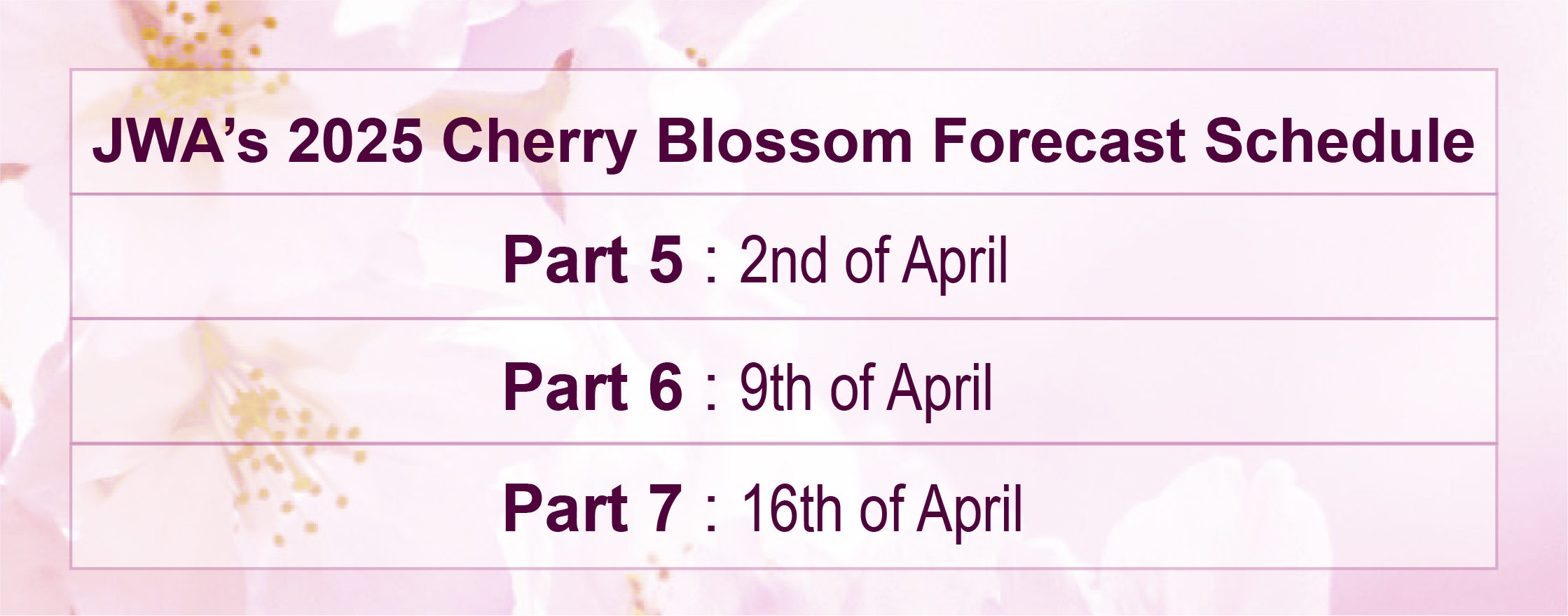
*English release approximately one day later. Further schedule is yet to be determined.
Q2: What are the criteria for the flowering and full bloom dates?
A2: The criteria are the same as those used by Japan Meteorological Agency. The flowering period starts the first day when 5 to 6 or more flowers have started to bloom on the designated observation tree (i.e. sample trees), and the full bloom date is the first day when more than 80% of the buds have opened on the sample trees.
Q3: How many locations are expected?
A3: We announce forecasts for 84 locations nationwide. The forecast locations consist of 53 sample trees observed by each Local Meteorological Observatory and 31 locations where observation data are obtained from cooperating agencies such as municipalities/local governments and parks.
Q4: What are the methods and characteristics of the Japan Weather Association’s cherry blossom forecast?
A4: We use our proprietary forecasting model that focuses on the temperature trends from autumn onwards, which significantly influence the growth process of the cherry blossom buds. Our forecasts are based on accurate observation data from sample trees at the Local Meteorological Observatories and cooperating agencies, emphasizing meteorological principles. Japan Meteorological Association has been conducting cherry blossom forecasts since 2007, making this year the 19th year of our endeavour.
Q5: What data are utilised for forecasting cherry blossoms?
A5: The following data are used.
1. Temperature observation data from the previous autumn to the forecast date
2. Temperature forecast data from the forecast date to the blooming period (from Japan Weather Association’s point forecasts and long-term forecasts).
The temperature from the previous autumn to spring significantly influences the cherry blossoming period. Cherry buds form during the previous summer and then enter dormancy. Exposure to a certain period of low temperatures during winter breaks this dormancy, and the buds grow and bloom with rising temperatures. It is believed that higher temperatures promote faster bud growth and earlier blooming.
PDF DOWNLOAD:Cherry Blossom and Full Bloom Forecast for 2025 (Part 5)
